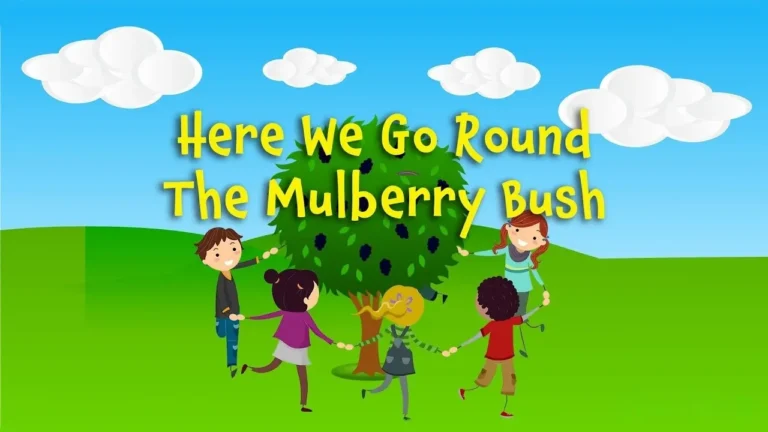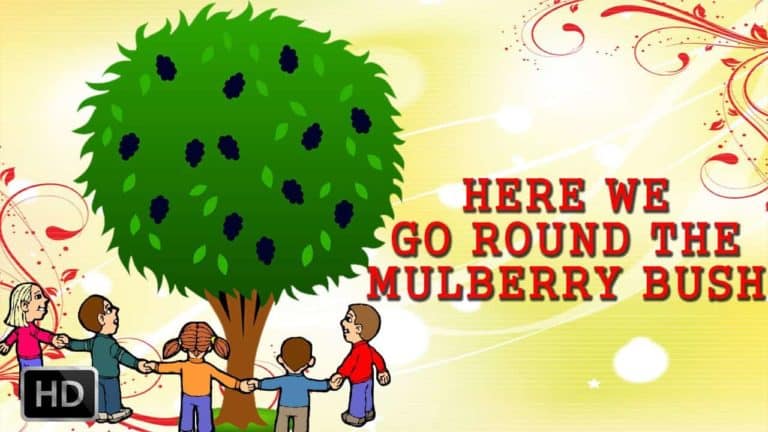Introduction
“Here We Go Round the Mulberry Bush” is not just a traditional nursery rhyme; it’s a formative part of childhood for many people around the world. This enchanting singing game has been passed down from generation to generation, captivating young minds and fostering a sense of community and fun.
With its simple yet memorable lyrics and universally relatable themes, the nursery rhyme holds a special place in global folklore. This article seeks to delve deep into the intricate world of this nursery rhyme, exploring its rich history, diverse variations, and the underlying meanings and messages that have made it a timeless classic.
The Nursery Rhyme
Before embarking on this fascinating journey, it’s essential to familiarize ourselves with the most popularly recited version of the nursery rhyme. This rendition has served as the standard form for many English-speaking households.
Here we go round the mulberry bush,
The mulberry bush, the mulberry bush,
Here we go round the mulberry bush,
On a cold and frosty morning.This is the way we wash our hands,
Wash our hands, wash our hands,
This is the way we wash our hands,
On a cold and frosty morning.This is the way we brush our hair,
brush our hair, brush our hair,
This is the way we brush our hair,
On a cold and frosty morning.This is the way we go to school,
Go to school, go to school,
This is the way we go to school,
On a cold and frosty morning.This is the way we wave bye-bye,
Here we go round the mulberry bush
Wave bye-bye, wave bye-bye,
This is the way we wave bye-bye,
On a cold and frosty morning.
Here We Go Round The Mulberry Bush
Origins and history
England: the birthplace
Many believe that “Here We Go Round the Mulberry Bush” originated in England. Historical records hint at the rhyme being popular as far back as the 19th century. Intriguingly, the “mulberry bush” in question is often thought to represent a prison exercise yard. In this interpretation, the song’s roots lie in the harsh realities of historical English penitentiaries, where prisoners would be led around a mulberry tree as a form of exercise.
Theories and speculations
The song’s origins are not just limited to the prison yard theory. Over the years, scholars and enthusiasts have developed various hypotheses about its genesis. One compelling theory suggests that the song initially served as a way for children to mimic adult activities. The original game accompanying the song involved children forming a circle and imitating daily chores, reflecting the societal norms and routines of the time.



